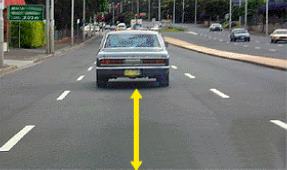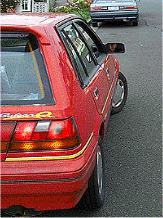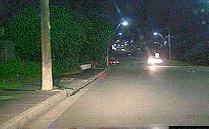DKT Car Driver Knowledge Test – Defensive Driving
This is a timed quiz. You will be given 45 seconds per question. Are you ready?
You are planning to drive from Sydney to the Gold Coast with some friends. To minimise fatigue and make the trip as safe as possible you should:
Taking regular breaks and swapping drivers is safest.
Many people crash within the first few years of driving. What is the best way of learning to drive on your own without crashing?
Build up your skills on familiar roads in daylight and light traffic. Progress to heavier traffic and unfamiliar roads once you are confident in your driving ability.
If you get sleepy while driving, it is best to
Turning up the radio and opening the windows have negligible effect on tiredness. Stopping and resting until you are not tired, or changing drivers is the best solution.
You set out on a fairly long drive to see some friends. After a while you start feeling tired. What should you do?
Taking a break will keep you more refreshed when driving.
While driving, you come across aggressive, selfish or ignorant driving behaviour by another driver. You should:
You are responsible for your own driving.
Under good conditions, when driving behind any vehicle, at any speed, you should:
Staying three seconds or more behind the vehicle in front will give you time to react in an emergency. If the conditions are wet, then you should increase this distance.
What is the best way to avoid hitting other vehicles, people or animals when moving off from the kerb?
Checking over your shoulder allows you to see objects that might be in your blind spot.
You are driving an older relative for an appointment and are running late. They ask you to go faster to get there on time. You should:
You are the one responsible for your own driving, adhering to the road rules, and driving safely.
In wet weather when it becomes hard for you to see, you should:
Your stopping distances will increase in the wet, and if visibility is impaired it may take you longer to react to an emergency situation so you should slow down. Other vehicles will not be able to see you as easily, therefore headlights are important.
If you are driving and it starts to rain, you should
Be especially careful when braking as oil and rain create a very slippery surface. Slow down to give yourself time to react, and also to allow for safe cornering and stopping.
You should leave a gap between your vehicle and the one you are following. In good conditions the gap should be:

Three seconds is a safe distance that gives you time to react and stop in an emergency situation.
You are about to move away from the kerb in your car. What is the last thing you should do before you move into traffic?

Checking over your shoulder allows you to see objects that might be in your blind spot.
When going on a long trip, out of the following which is the most important to do?
Driving long distances can be tiring and you increase your risk of falling asleep at the wheel.
When it is very foggy during the day or night and your vehicle has no fog lights, you should
High beam headlights will reduce your visibility and could dazzle other drivers. Following closer to other vehicles reduces your time to react to emergency situations.
At night, when you approach an oncoming vehicle, you should:
Looking at the left of the road will allow you to judge where you are without being dazzled by the oncoming vehicle's lights. Your high beam lights could dazzle another driver, and you should not look directly at another vehicle's headlights as it will temporarily affect your vision.
It is important to scan while driving so you can see everything that is happening on the road. What does scanning involve?
Continually scanning in all directions keeps you aware of the situation all around you and gives you a better chance of reacting to emergency situations.
Which of the following attitudes is most likely to make you a safer driver?
You are the responsible person for your driving and the safety of others as a result of your driving.
At night, if an oncoming vehicle's headlights dazzle you, you should:
Slow down, look at the left hand edge of the road and wait until your eyes recover until you speed up again.
When driving on a slippery wet road, for example, one covered in early morning dew, your vehicle will:
There is less friction on the road when it is wet, therefore you should allow for longer stopping distances.
If you are a new driver and first start to drive at night you should:

Build up your skills on familiar roads when you start driving at night. Night driving is quite different to daytime driving, so removing that extra challenge of unfamiliar territory will help you improve safely.
At night you should:
It is more difficult to see the entire road situation at night, therefore leaving a longer gap gives you more time to react.
Why should you avoid heavy braking on a wet road?
If you don't have anti-lock brakes heavy braking may lock the wheels, causing a skid. Once you are skidding you are out of control. If you do have anti-lock brakes, someone behind you could run into you
It is night time and you are driving home from the movies. You are travelling in a line of vehicles. What size gap should you leave between your vehicle and the vehicles in front of you?
At night time it is more difficult to judge distances. Four seconds is a safe gap.
When driving in wet weather, your vehicle will:
There is less friction on the road when it is wet, therefore you should allow for longer stopping distances.